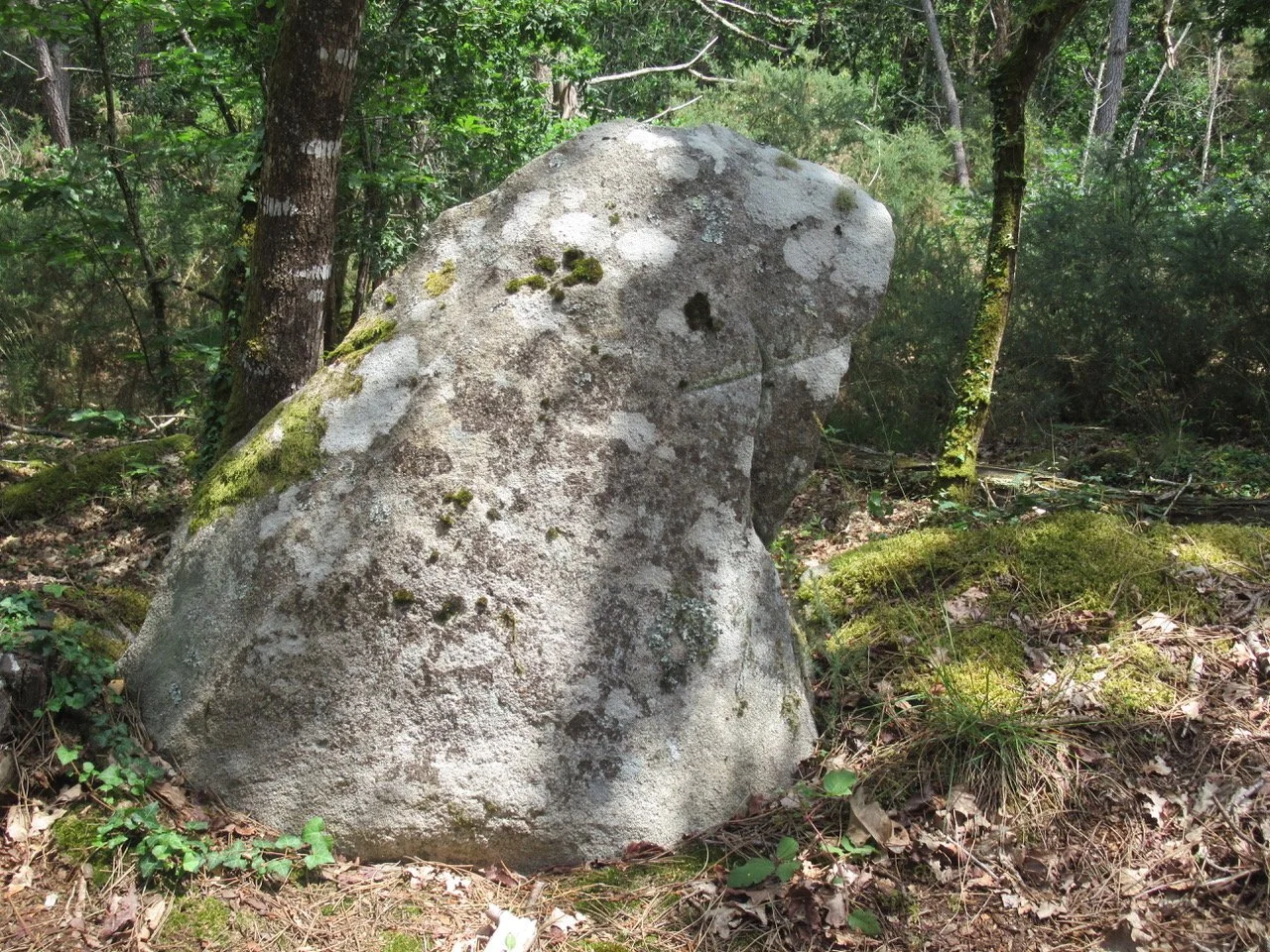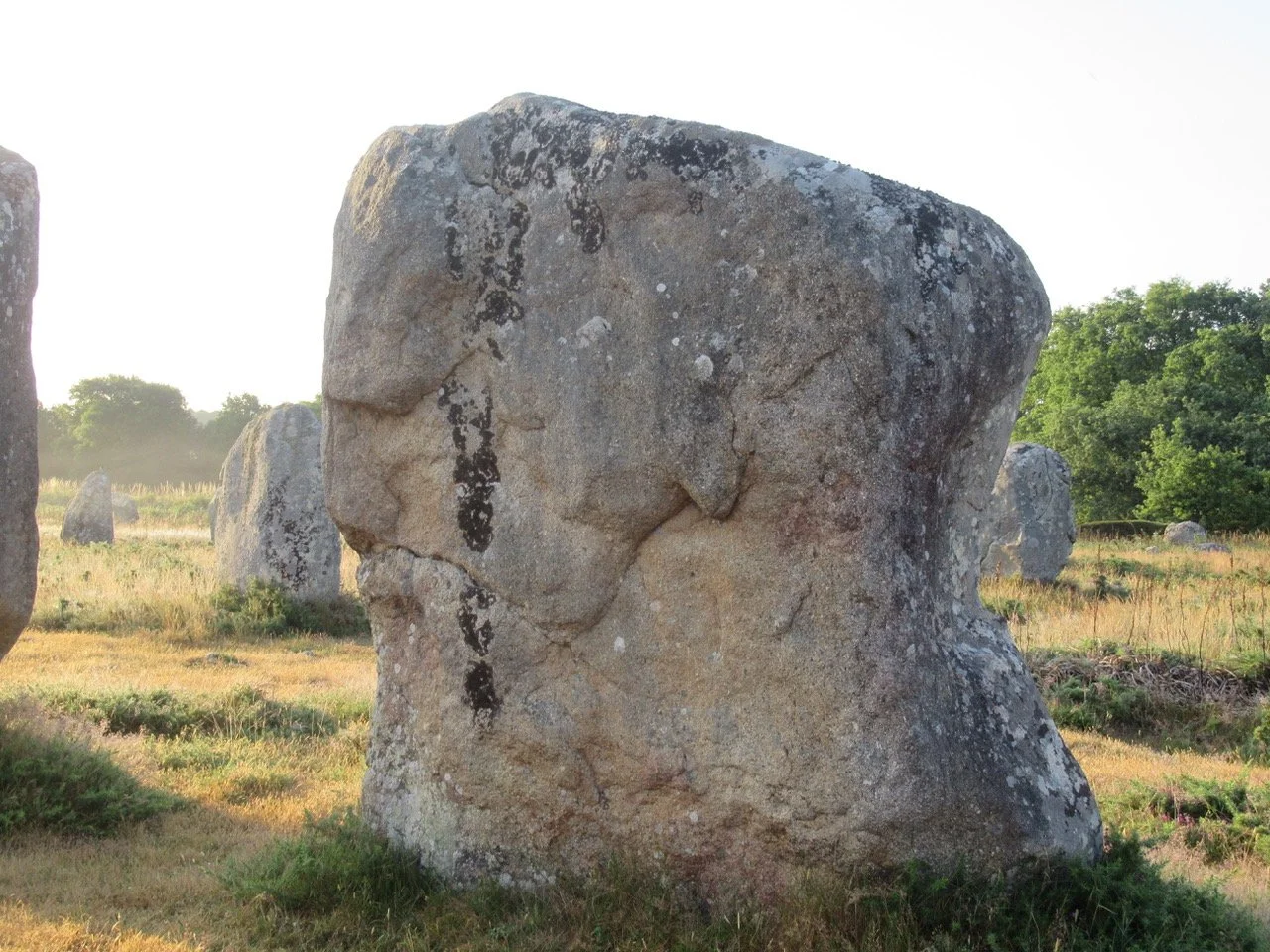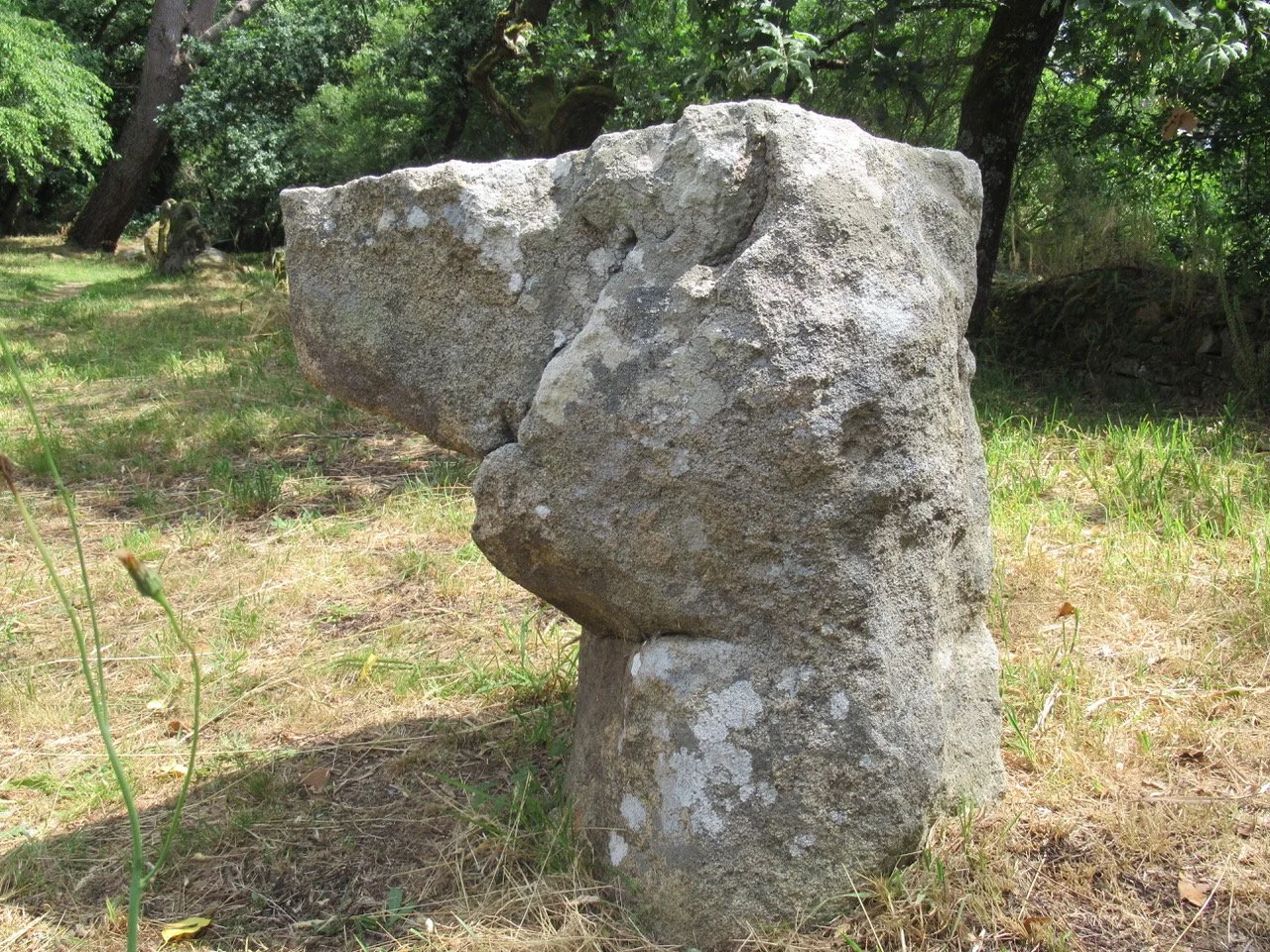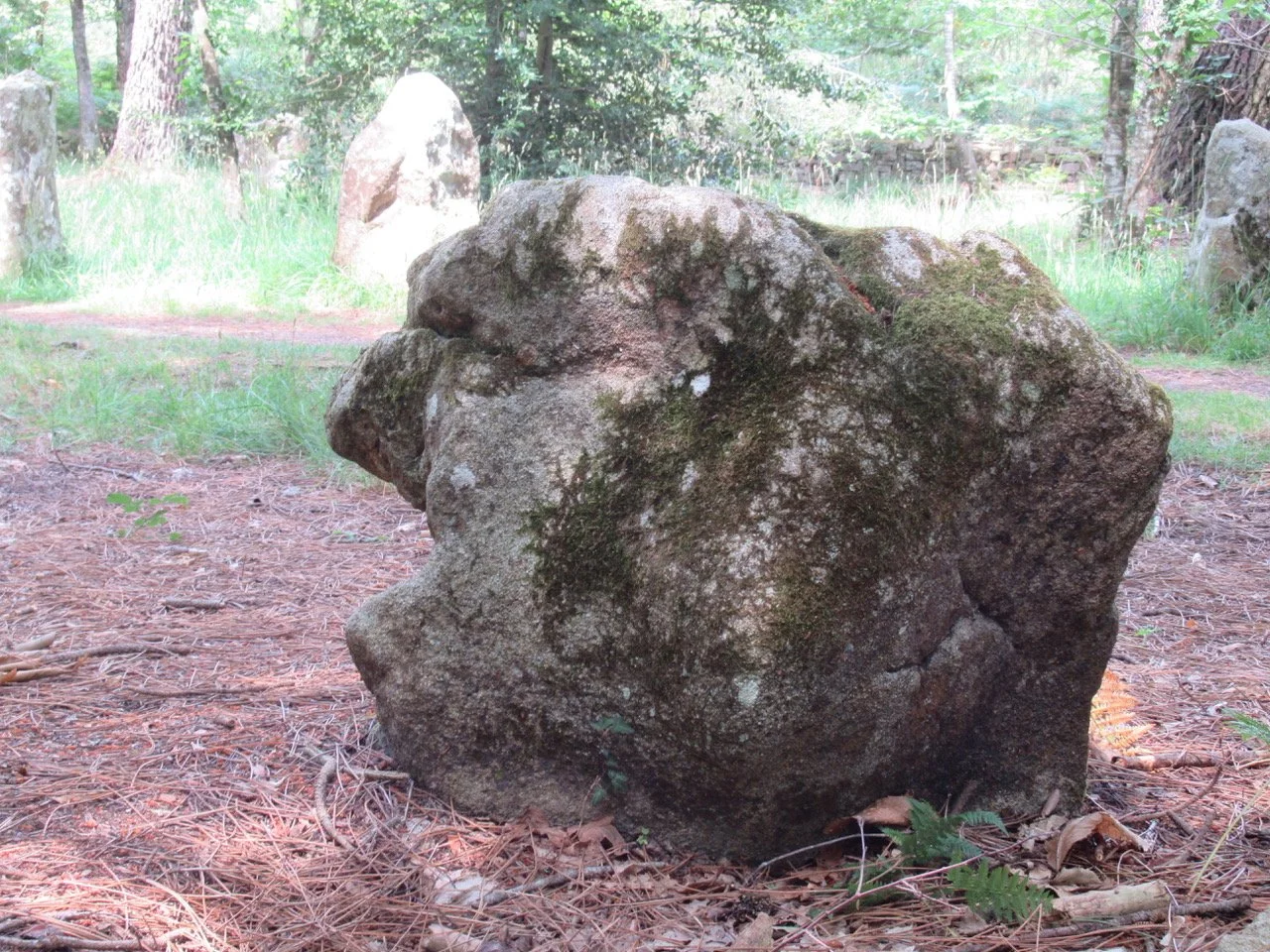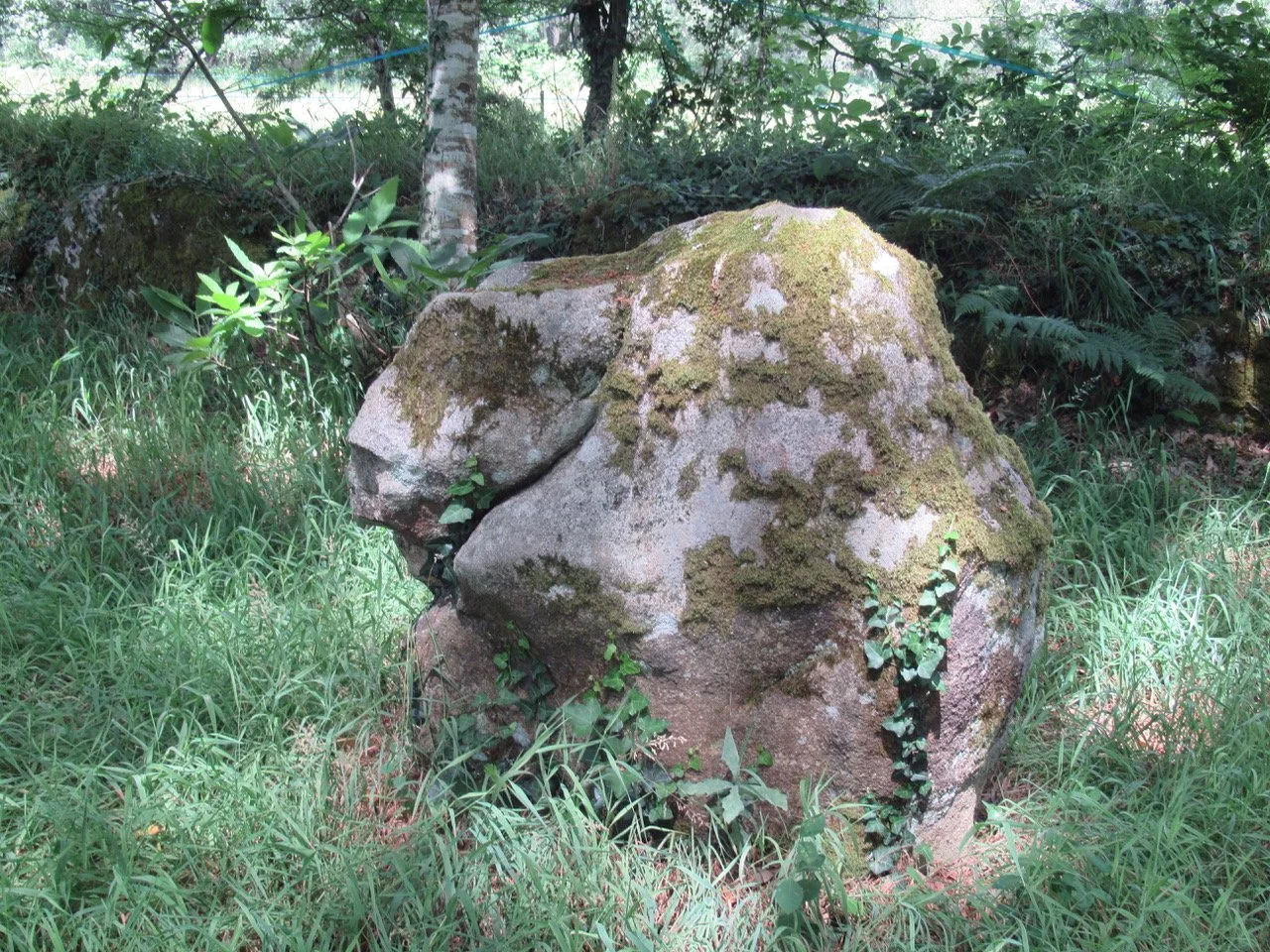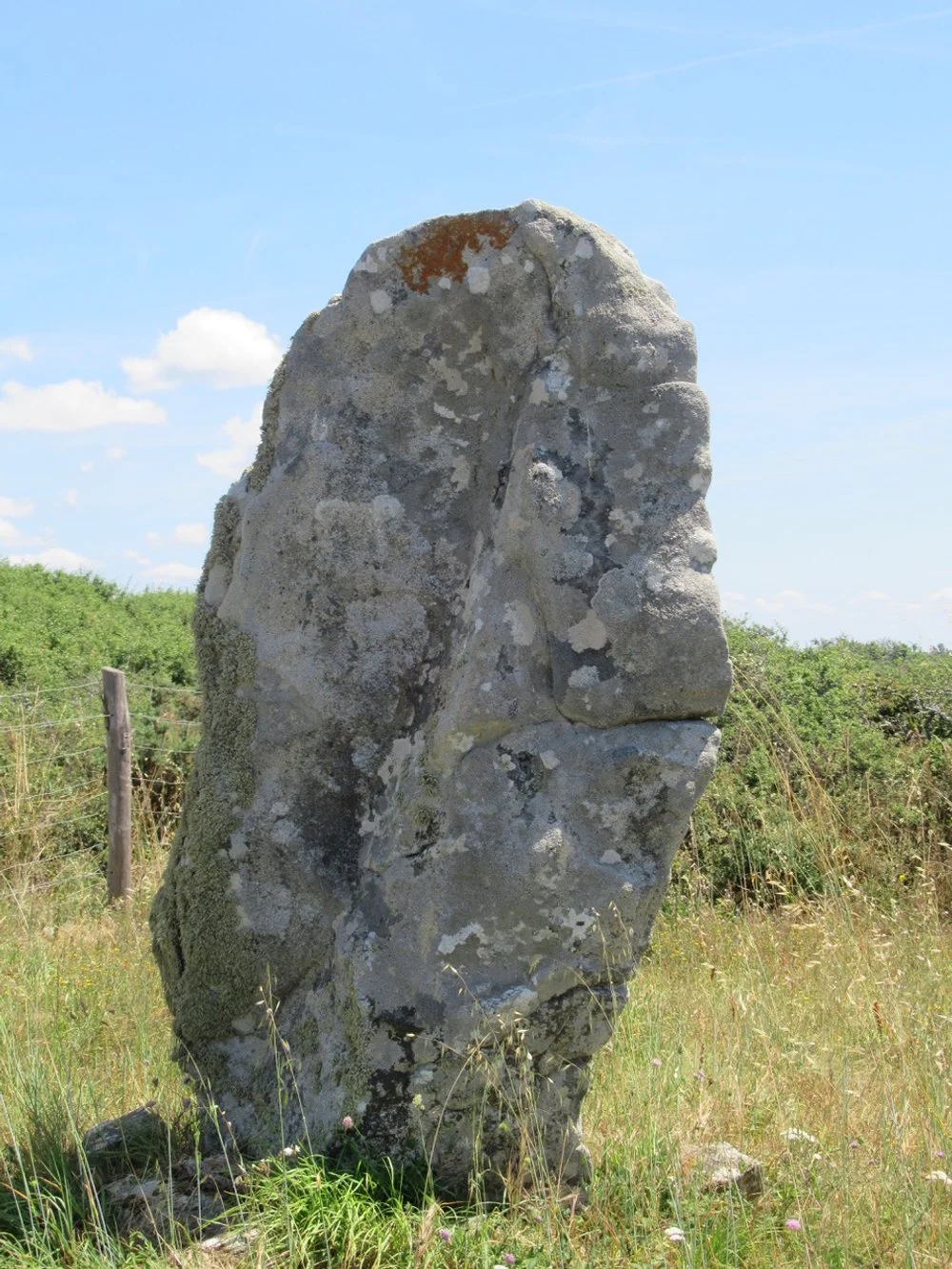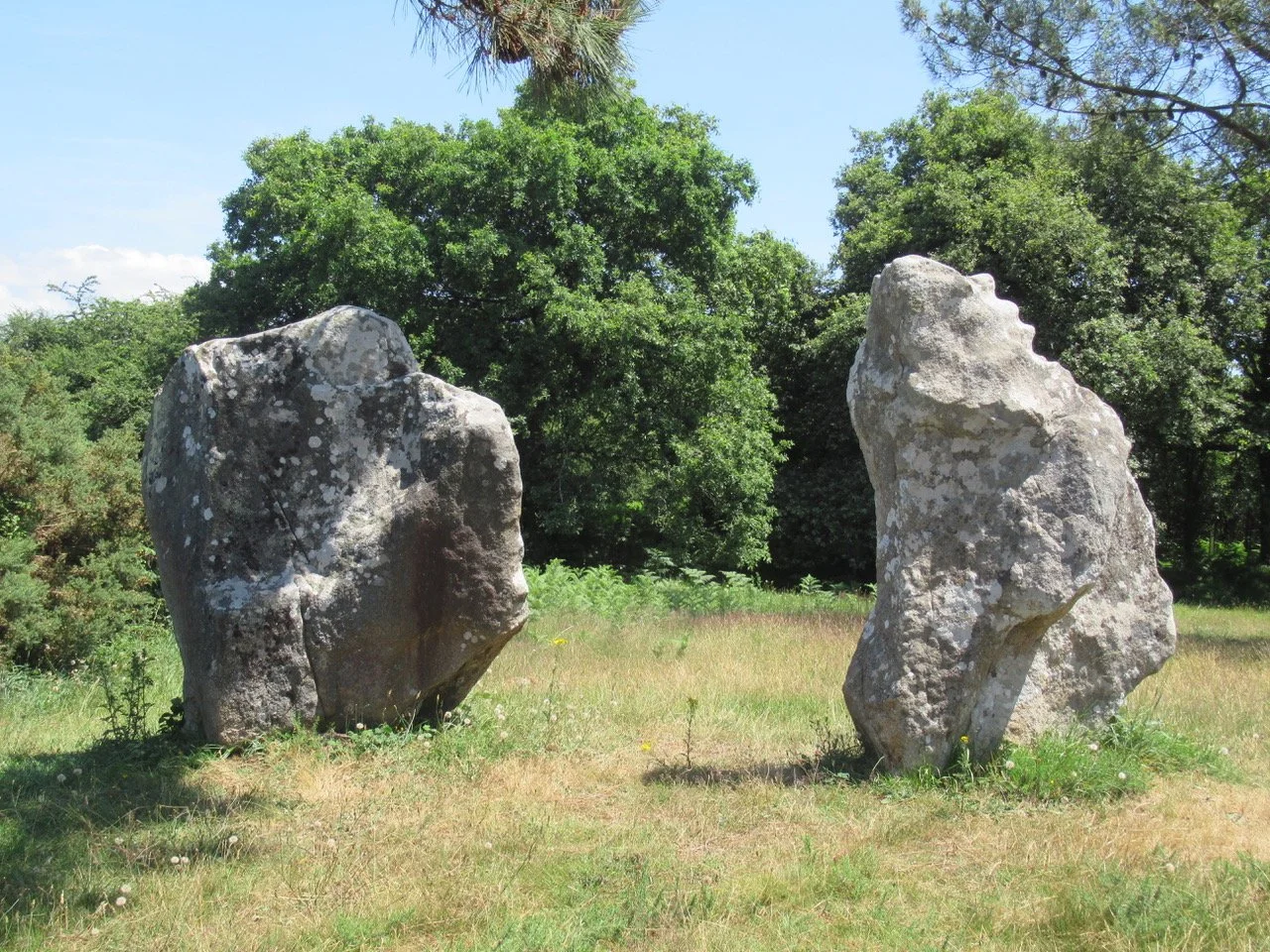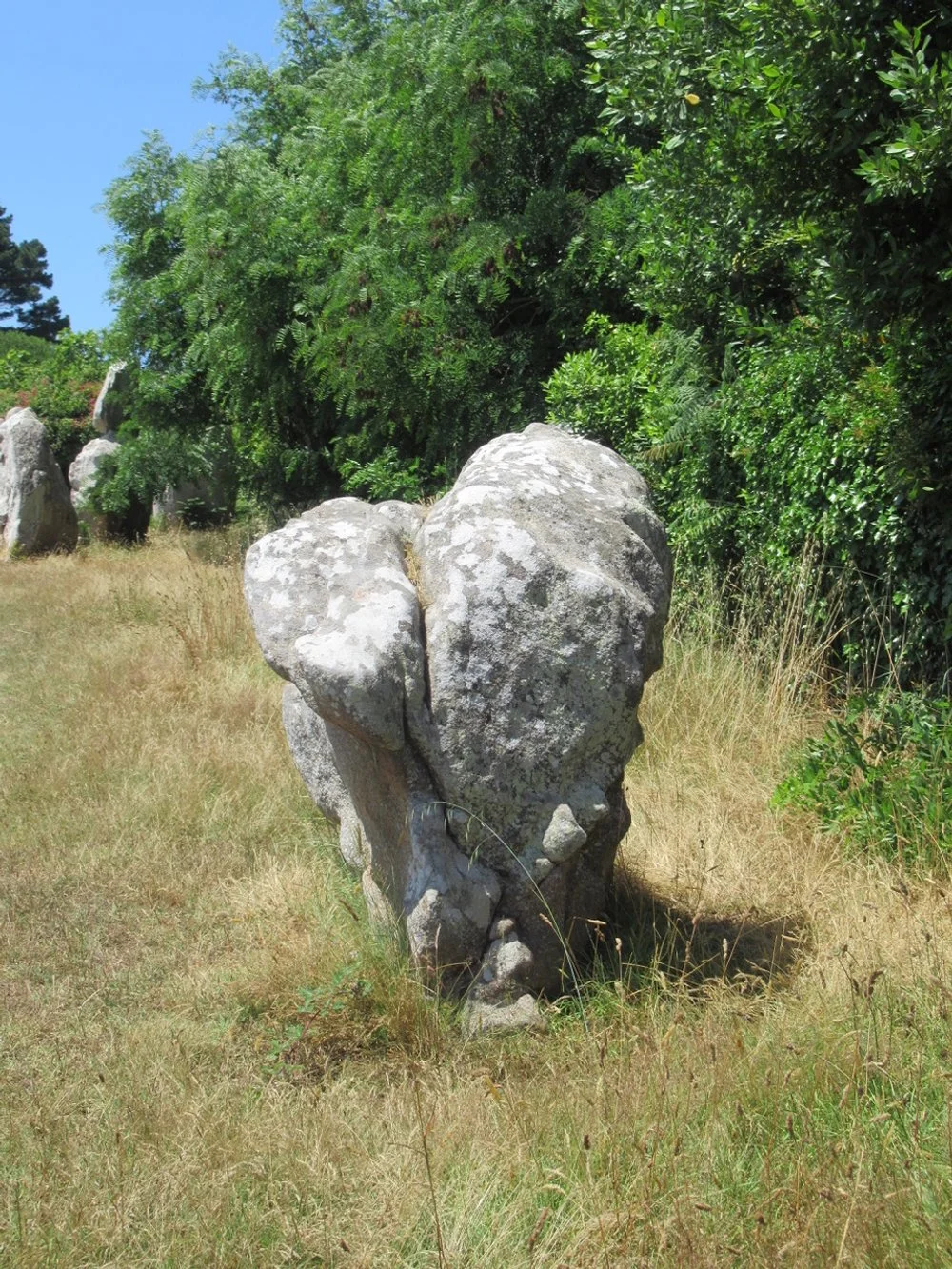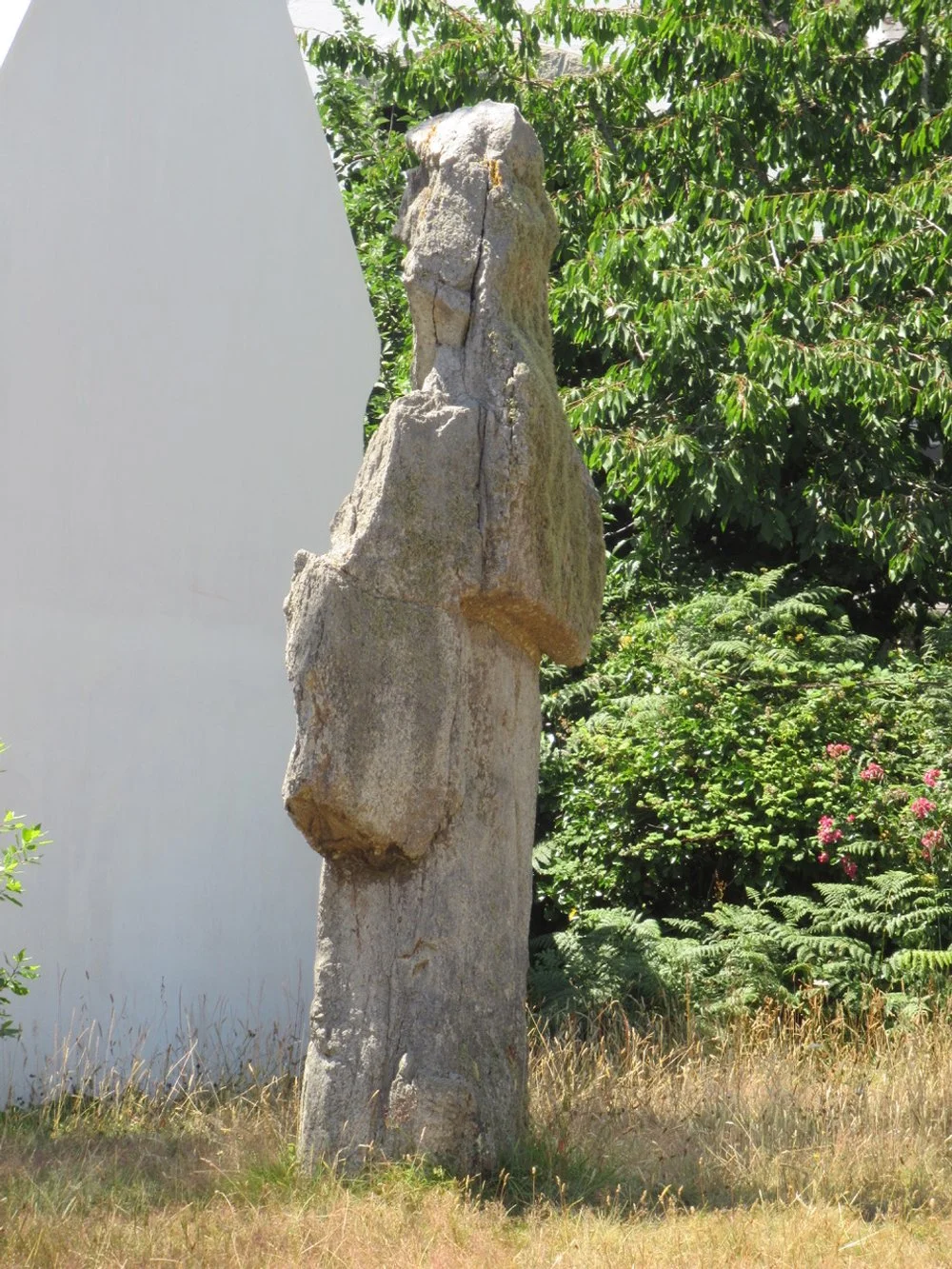Carnac's funny stones!
Most people have heard of Carnac in Southern Brittany, not least as a popular holidaying destination in Southern Brittany, but also for the lines of standing stones crossing the landscape, that also attracts people.
Carnac is the largest megalithic site in the whole world and the megalithic monuments are far older than the ones found in the British Isles or here on Guernsey, albeit ours are very old too. Some of them are also far bigger, amazingly so. And there are an enormous number of them, mind blowing really - the Carnac alignments, the best preserved of the stone avenues, contain today slightly over 3,000 stones alone.
Sadly though, archaeologists have estimated that between 85 and 90% of the megaliths in the area have disappeared today. Not that this stops the estimated 900,000 people who come to visit each year and feel the magic which permits the air as a result of these ancient stones.
The Carnac area displays a variety of different kinds of monuments, some of which we see here on Guernsey:
The Menhir - this comes from the Breton for men = stone and hir = long, and basically means a single stone standing alone or in a single or multiple alignments, or in curves known as cromlech or rectangles known as quadrilaterals or lying on the ground as a recumbent. On of our most famous menhir’s on Guernsey is La Longue Rocque along Les Paysan’s (L’Eree hill) and of course the two Goddess menhir’s at both Castel Church and St Martin’s church.
The dolmen comes from dol = table, which is a chamber or corridor where huge horizontal stones are placed on upright support stones. Most dolmens are covered with a cairn, which is a mound built with small stones. We have covered dolmen’s here, Le Creux at L’Eree, Dehus out near Bordeaux and La Varde up on L’Ancresse Common. Les Trepieds is an uncovered dolmen and probably part of a group of dolmen’s out at Perelle.
The tumulus is an artificial hill, much bigger than a cairn, which had mud and clay applied in layers to make it waterproof.
Carnac is mainly famous for its rows of stones, 4km long which are divided into three sections, albeit there are many dolmens and other exciting stone structures and one could spend a month here and still not properly see it all. I went for a week in June over the summer solstice, with my stone friend and we literally spent each day visiting the most famous sites and some of the less famous sites and even then we didn’t see all of it, not even half of it.
That was my second trip. The first trip was back in 2017 when Elijah was 3 and Eben only 8 months and while we happened to be there for the summer solstice, I didn’t know much about the sun alignments at Carnac back then and while I acknowledged sunrise, I didn’t make any effort to go to any of the actual alignments, which is a shame, as there is one just outside the campsite! Still, we live and learn.
On that trip though, Carnac did begin to guide me, and in the evening I often went out walking on my own with Eben in a pushchair to try to get him to sleep. The campsite was right by the alignments and while I walked beside them, my mission was always to get into the forest where I had chanced upon (or not as the case may be) La Quadrilatere de Manio, a rectangle of neolithic stones that - as it happens - has various sun and moon alignments. There’s a huge menhir there too called le Geant du Manio, and I just couldn’t get enough of it, something kept drawing me back.
In fact I didn’t realise it at the time, but I took a photo through two stones of the huge menhir which stands to the side and this is winter solstice sun rise aligned. I found myself back at this place during my trip this June, on midsummer’s eve, on my own, my friend stayed back at the campsite, I was curious to see if I could find it as easily as I used to - I couldn’t as it happened, mainly because I ignored the wooden pathway they have now created through the forest to connect these neolithic sites on account (we believe) of Carnac trying to obtain UNESCO status.
Anyway, when I finally found the stones, it was approaching - as it happens - sunset, and I sat between those two particular stones and watched the sun setting through the trees, getting eaten alive by mosquitos in the process might I add. It was rather magical though, as I had the place to myself and I saw a deer in the distance (this had happened when I had visited with Eben too), and this neolithic alignment holds a special place in my heart, because it draws me and feels safe, even in the middle of a forest as darkness descends..
But that’s the thing with Carnac, it looks after you, and it will take you on an adventure if you let it. As I wrote earlier, my stone friend really helped me to explore more of the area on our recent trip and experience all sorts of different neolithic structures and I was able to feel the difference in the energy. I was especially excited about all the rock art as this is really a passion, and I will share more of that another time, but for now, a selection of stones which have been shaped to resemble familiar figures to give you a taster:
We are off to Carnac as a family the last week in August and will be there while the whole place gets charged off the full moon - hoping it will recharge us all in the process ahead of the new term! We’re hoping for surf on the Quiberon peninsular too, but I am sure we’ll get to visit a few of the sites and no doubt stumble across some more funny stones, which I’ll share another time.
For those of you keen to experience a dolmen, then the next Song of the Earth session is on Thursday 7th September, more details and to book here.
Love Emma x

